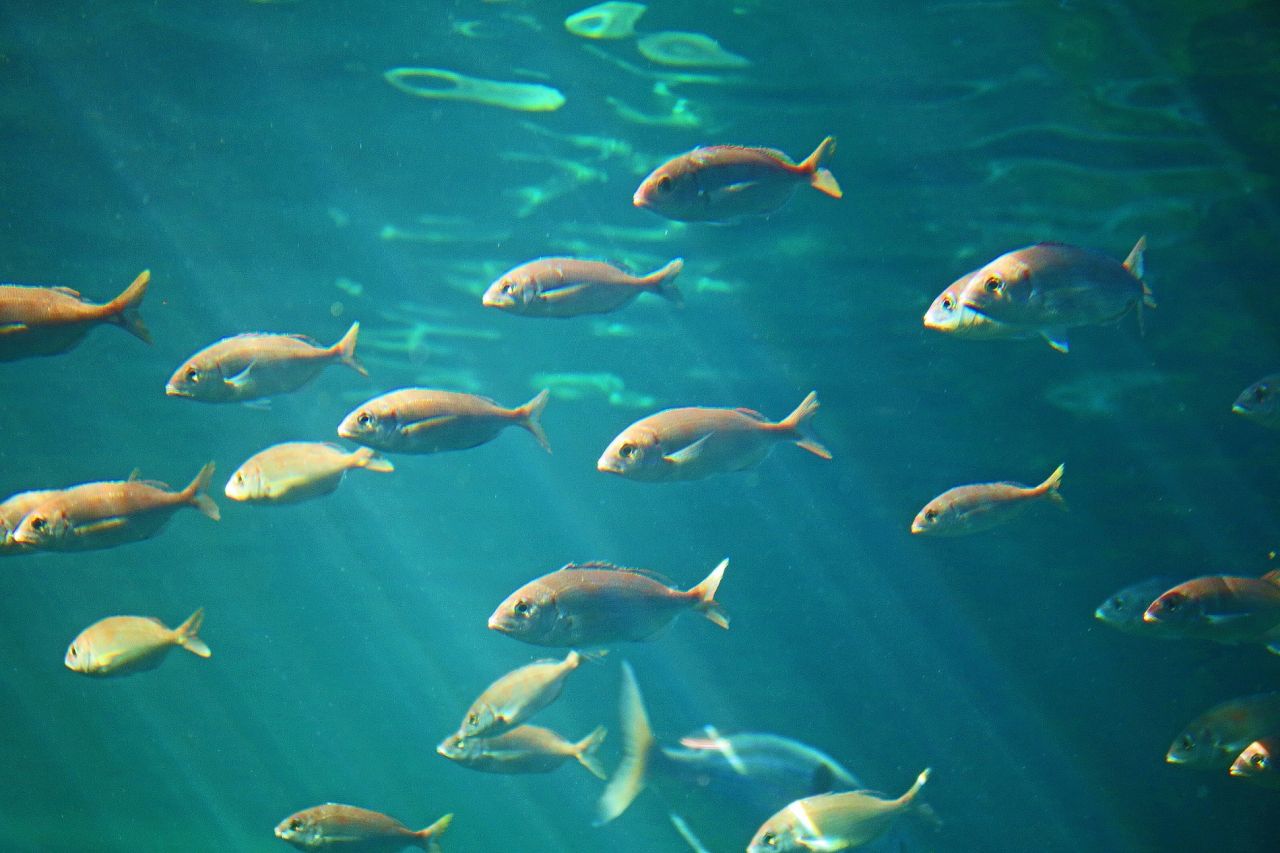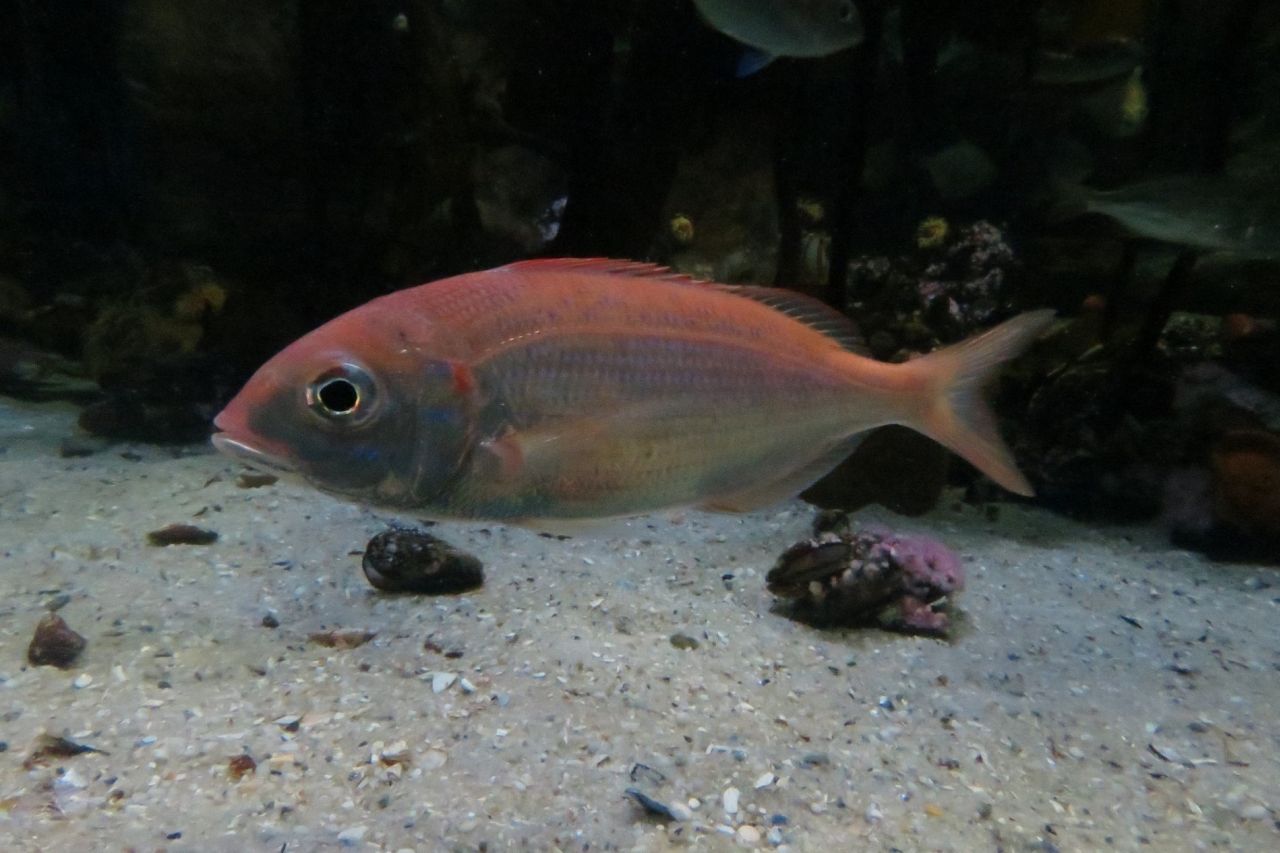Appearance and lifestyle:
Red tjor-tjor (Pagellus natalensis) are small pink fish of the porgy family that develop rows of reflective blue dots along their flanks as they mature. Their small mouths are equipped with several sharp incisors and two rows of molars, which they use for hunting small, bottom-dwelling invertebrates, such as echinoderms and polychaetes, and small fish, which they can dive up to 250m to find.
Habitat:
Tjor-tjor are native to the Western Indian Ocean around South Africa, Madagascar and Mozambique, where they form schools in deep, sandy bays. Here they form an important prey animal for a large number of other species. Spawning season occurs in spring along the KwaZulu-Natal coast near the continental shelf. Larval red tjor-tjor drift as plankton in these waters or sink below the continental shelf to depths of up to 2km. Juvenile tjor-tjor are commonly found taking refuge in shallow bays on the coast of Southern Africa, with the highest abundance observed near Mossel Bay.
Diet:
They eat small, bottom-dwelling invertebrates such as echinoderms, polychaetes and small fish.
Threats:
Climate change, pollution, bycatch etc.

What is a porgy?
Fish of the family Sparidae are often referred to as "sea breams", "porgies" or "sparids". These approximately 100 species are all deep-bodied, compressed and have small mouths on the bottom of their heads, i.e. there is a large distance between their eyes and their mouths. Their tail fins are usually forked. Sparids are generally dull silver, brown or reddish colours. When rare, coloured patterns are present, the most common layout is a series of horizontal stripes that become duller with age.
Most species have some form of molar in their mouth which can be used to grind the shells of molluscs and crustaceans, and all have some sort of grinding apparatus in their pharyngeal jaws. They also all have small canines or incisors to supplement the molars. All "sparids" are carnivores, feeding on bottom-dwelling invertebrates and fish. Because of their dependence on the sea floor, they usually inhabit shallow waters. They typically prefer temperate or sub-tropical waters and are found in greatest diversity along the African coast - 41 of their 100 species are native to South African waters.
Most sparids are gonochoristic which means that their species has two distinct sexes and that individuals are biologically one or the other. In a few rare species, they display sequential hermaphroditism, where they start as one sex and change into the other with age. Other examples of porgies and sea breams that you can often find at the Two Oceans Aquarium are the zebra, santer, black musselcracker, seventy-four and dageraad.
